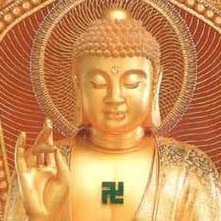Search the Community
Showing results for tags 'Trul khor'.
Found 3 results
-
Hello, There are already some topics similar to this one, and I have read them, but still I felt that my questions weren't answered, so I decided to register on the forum and ask them myself. Originally I planned to send it as a DM to @steve, but I decided to post it openly, so anyone else that has experience with both systems can contribute if they wish to do so. That being said, I'd really appreciate your input @steve. I'm a Yungdrung Bon practitioner. My practice, at least when it comes to working with channels and energy, consists of tsa lung exercises from Magyud, Zhang Zhung Nyengyud trul khor and tummo from Ku Sum Rang Shar (for now the general and special preliminaries only). Recently I have begun to dabble a bit in qigong, with some local instructor and their teacher that visits us from time to time. We seem to do mostly alignment stuff for now, opening the kua, wall squats and the like, as well as some basic forms. Even at that really basic level my qigong practice really enhanced my body, my energy levels and general well-being, in a way that my Tibetan yoga practice didn't seem to address. I get many benefits from doing yoga of course, but it just has a different feel and effect upon my mind and body. I'd describe it like using different sets of muscles, metaphorically speaking. I want to continue my qigong practice, as I found it rewarding and complementary to my other endeavours, but I'm worried it can cause some problems down the line. I've read the injunctions against mixing systems from both traditions, so understandably that is concerning to me, as of course I will continue on the path of Tibetan yoga. From your point of view - practitioners that have practiced in both traditions - can they be mixed safely or not? (by mixing I don't mean doing them in one session, but for example qigong one day, yoga the other, or qigong in the evening and yoga in the morning etc.) If so - what is the qigong system that you would recommend for someone like me? I was thinking about the Zhineng Qigong (simply because of the availability of online teachings), but I read that the teacher advised against mixing it with other qigong system, not to mention other traditions. Secondly, do you think that the Tibetan approach is lacking in certain respects? I don't mean to offend anyone, or the teachings. I consider myself a dedicated practitioner, I've taken refuge vows, but I can't help but wonder that the Tibetan systems are forceful and fiery to the extreme, pure yang, while the Daoist systems seem more balanced. At least that is my limited, entry-level understanding, as I am an expert in neither. I'd appraciate any guidance I can get, and thanks for getting through this long post _/\_
-
Greetings everyone, In honor of Chogyal Namkhai Norbu's upcoming retreat on the pranayamas of Yantra Yoga, I want to say something about this marvelous system, which has benefited me a great deal. In contrast to Indian Yoga, where there is an abundance of information on postures and pranayama exercises available, Tibetan pranayama exercises are not given out to the general public, and to a large extent even the systems of systems of yoga postures are secret. One of the exceptions to this secrecy is Yantra Yoga taught by Chogyal Namkhai Norbu. Yantra Yoga is a Sanskritization of Trul Khor, a "yantra" being a series of movements linked with breathing. In the practice, movement is done on inhales and exhales, and breath retention is done holding a posture. Those who have researched Tibetan breathing practices such as tummo have probably seen that they use a type of breath retention called vase breath. But what exactly is vase breath - how does one do it? Getting clarity on this is not easy. This is where Yantra Yoga comes in: in Yantra a proper vase breath is divided into four steps: open hold, directed hold, closed hold, and contracted hold, which in turn are done on the basis of correct inhalation and exhalation. The mechanics of the movements and poses make your body do these elements correctly (provided you are doing practice with awareness). So you get a very precise felt sensation of what a proper quick inhale, slow inhale, quick exhale, slow exhale, open hold, directed hold, closed hold, contracted hold, and empty hold feel like. You then take this knowledge and apply it to your pranayama practice, so there is no doubt that you are doing it correctly. Brilliant! Different holds are trained by different yoga postures. Backbends such as cobra, locust and bow train open hold; twists train directed hold; inversions such as sholderstand and headstand are poses that train closed hold; and downward dog, fish, and frog are poses that train contracted hold (I am using the standard Hatha Yoga names for the poses here, although they are often similar or the same in the Tibetan system). There is more to the system than that such as various preliminary and closing exercises, but training the different holds using postures is the gist of it. There are many books and DVDs available to learn the system. In my case, I went to yoga classes in my area with good lineage (Iyengar and Ashtanga) in order to learn the poses correctly, and then learned the Yantra Yoga way of linking the poses together with breath from the books and DVDs. So that is the physical aspect of the system. It is very good even if you are just interested in Hatha Yoga because you understand what correct breathing is like, rather than just correct physical alignment, and this plus the dynamics of the different holds opens up a deeper understanding of subtle inner alignments. A lot of things about yoga postures make a lot more sense to me having studied this. Now, about pranayama. There are two preliminary pranayamas which are forms of alternate nostril breathing, and then five main pranayamas of which use vase breath in a major way. The first two of these are more physical and the last three incorporate visualizations of channels and chakras. Chogyal Namkhai Norbu is going to be teaching these pranayamas in his next retreat which will be webcasted (!) for free (!!). He typically spends one or two session of every retreat teaching about Dzogchen generally, and then teaches the practices specific to that retreat, with one session at some point explaining and then giving direct introduction (!!!). These pranayamas are not associated with the cycle of a deity like other Tibetan tsa lung systems, but are directly related with Dzogchen. So if you get the direct introduction and oral explanation, you have permission to practice. And he doesn't teach these particular practices very often. What's more, the books that serve as references for the practices he teaches are only available to members of his organization, the one exception being the book on the complete system of Yantra Yoga, which is publicly available. http://www.amazon.com/Yantra-Yoga-Tibetan-Movement/dp/1559393084/ In other words, this retreat, in addition to the publicly available book, is giving unprecedented access to authentic Tibetan pranayamas connected with Dzogchen. The retreat will be June 3-7, from Tenerife, Spain. The official schedule is not up yet, but typically the session are two hours each, with a 10 am morning session and an afternoon session starting a 3 or 4 pm. http://melong.com/events_listing/spain-tenerife-dzamling-gar-june-3-7-2016/ http://webcast.dzogchen.net/
-
An excellent documentary I found explaining the traditions of Tibetan Buddhism. Tibetan Buddhism is considered by many to be the most authentic form of Buddhism still in existence today. Included in this documentary is video footage of Yoga practices called Tummo and Trulkor- [media]http://www.youtube.com/watch?v=dOk0tZHwCs4[/media ]
- 10 replies
-
- 3
-

-
- Tibetan Buddhism
- Dalai Lama
-
(and 8 more)
Tagged with:



